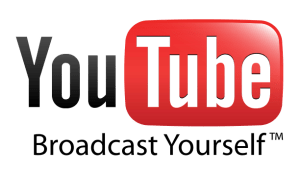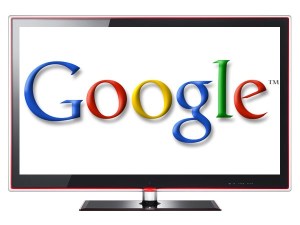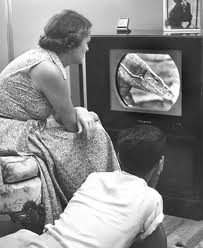On Friday morning, YouTube visitors logged on to a radically different looking website. No longer is YouTube to be a random surfing experience, bouncing from one random video to the next, but rather an emphasis has been placed on video ‘channels’. While the randomness of YouTube isn’t going away entirely, YouTube users are being guided toward subscribing to content providers individual channels.
 And it’s set to revolutionise what we understand to be the television experience.
And it’s set to revolutionise what we understand to be the television experience.
We view television to be a relatively impersonal experience. While social media engagement has changed the medium somewhat, viewers still sit down on the couch to watch content produced by a company by which they have no immediate connection. The new YouTube changes this somewhat. The new emphasis on channels has a natural tendency to favour established media companies over the cat videos posted by your Aunt Linda. It’s more likely that a YouTube visitor will soon be watching videos from the New York Times, Channel Nine, and Universal Music as regular viewing. After all, there is a sense of familiarity to them as brands. The recent YouTube announcement that they were set to launch 100 channels of content from established brands further strengthens this re-focus of the core intent of the site.
All of that said, don’t ignore the value of Aunt Linda and her cats.
The strength of YouTube will continue to be it’s mix of content between that produced by professionals (and amateurs with an eye towards professional work), as well as the videos shot by amateurs capturing their everyday lives. It means that while someone may engage with YouTube to watch the latest TV shows, music videos, movies on demand, news clips, etc, the video channel set up by their Aunt Linda to show off those darn cats will be given equal billing on the platform. From a consumer perspective, the mix of professionally produced content, niche productions, and content of personally engaging material is a difficult combination to beat.
The streamlining of this content is clearly a deliberate attempt to be ready for the launch (and inevitable integration into) of a revamped Google TV.
 When Google TV first launched, it foolishly sought to take the Google approach and use the platform to index television. Partnerships were signed with content providers, but largely the Google TV was intended to crawl TV and streaming video websites and reform it into a viewing experience for the home television. While this approach is fine for scrappy start-ups like Boxee and Roku, it could never work with an entity as large and significant as Google. And it didn’t. Video companies prevented Google from being able to harvest their product, rendering the Google TV to be more than a little flaccid on arrival.
When Google TV first launched, it foolishly sought to take the Google approach and use the platform to index television. Partnerships were signed with content providers, but largely the Google TV was intended to crawl TV and streaming video websites and reform it into a viewing experience for the home television. While this approach is fine for scrappy start-ups like Boxee and Roku, it could never work with an entity as large and significant as Google. And it didn’t. Video companies prevented Google from being able to harvest their product, rendering the Google TV to be more than a little flaccid on arrival.
They’ve clearly learnt a lot from their mistakes with the initial Google TV that they’ve applied across their entire suite of services. The recent launch of Google Music showed clearly that this is a changed Google. They’re now a company that want to provide platforms that enable content owners to spruik their wares through the platform, as opposed to the Google of old which seemed content to simply link the consumer with the content creator. With content partnerships and this new integrated channel approach, a Google TV incorporating YouTube actually has the potential to be pretty killer.
The strength that Apple maintain is their ability to extract money from their users. Apple users have become accustomed to paying for content through their various devices in a way that is not seen across other platforms. The result is that premium content holders tend to sell their wares first on iOS devices before exploring options like Android. When Apple launch their oft-rumoured Apple TV, it will be a compelling product. It’ll undoubtedly be a triumph in design and will impress. But, it may not be enough to maintain a hold over the industry in the way they have over the tablet market.
 The real wild card in this is that Google own a social network, Google Plus (G+). Currently, it’s a social network that just happens to exist with little real purpose. Introduce a Google TV to the world and suddenly G+ becomes the backbone to your content consumption. Recommendations from like-minded friends in one of your Circles, connecting with friends and family through the G+ Hangouts, and competing against your friends high score on Angry Birds is all made that little bit easier when all of your devices are connected to the same platform. And, of course, add to that all of the connectivity this further provides to their mobile devices.
The real wild card in this is that Google own a social network, Google Plus (G+). Currently, it’s a social network that just happens to exist with little real purpose. Introduce a Google TV to the world and suddenly G+ becomes the backbone to your content consumption. Recommendations from like-minded friends in one of your Circles, connecting with friends and family through the G+ Hangouts, and competing against your friends high score on Angry Birds is all made that little bit easier when all of your devices are connected to the same platform. And, of course, add to that all of the connectivity this further provides to their mobile devices.
Without the new YouTube revamp, Google TV would potentially be a little aimless. The revamp further extends the possibilities hinted at through the recent Google Music launch and opens up Google TV as a platform that can provide some serious competition to Apple and the excitement that will surround their TV product launch. It’s yet to be clear exactly what sort of interesting ways we’ll be engaging with our TV in the next few years, but realise that Aunt Linda and her cat videos will be at the heart of it.







Crikey is committed to hosting lively discussions. Help us keep the conversation useful, interesting and welcoming. We aim to publish comments quickly in the interest of promoting robust conversation, but we’re a small team and we deploy filters to protect against legal risk. Occasionally your comment may be held up while we review, but we’re working as fast as we can to keep the conversation rolling.
The Crikey comment section is members-only content. Please subscribe to leave a comment.
The Crikey comment section is members-only content. Please login to leave a comment.